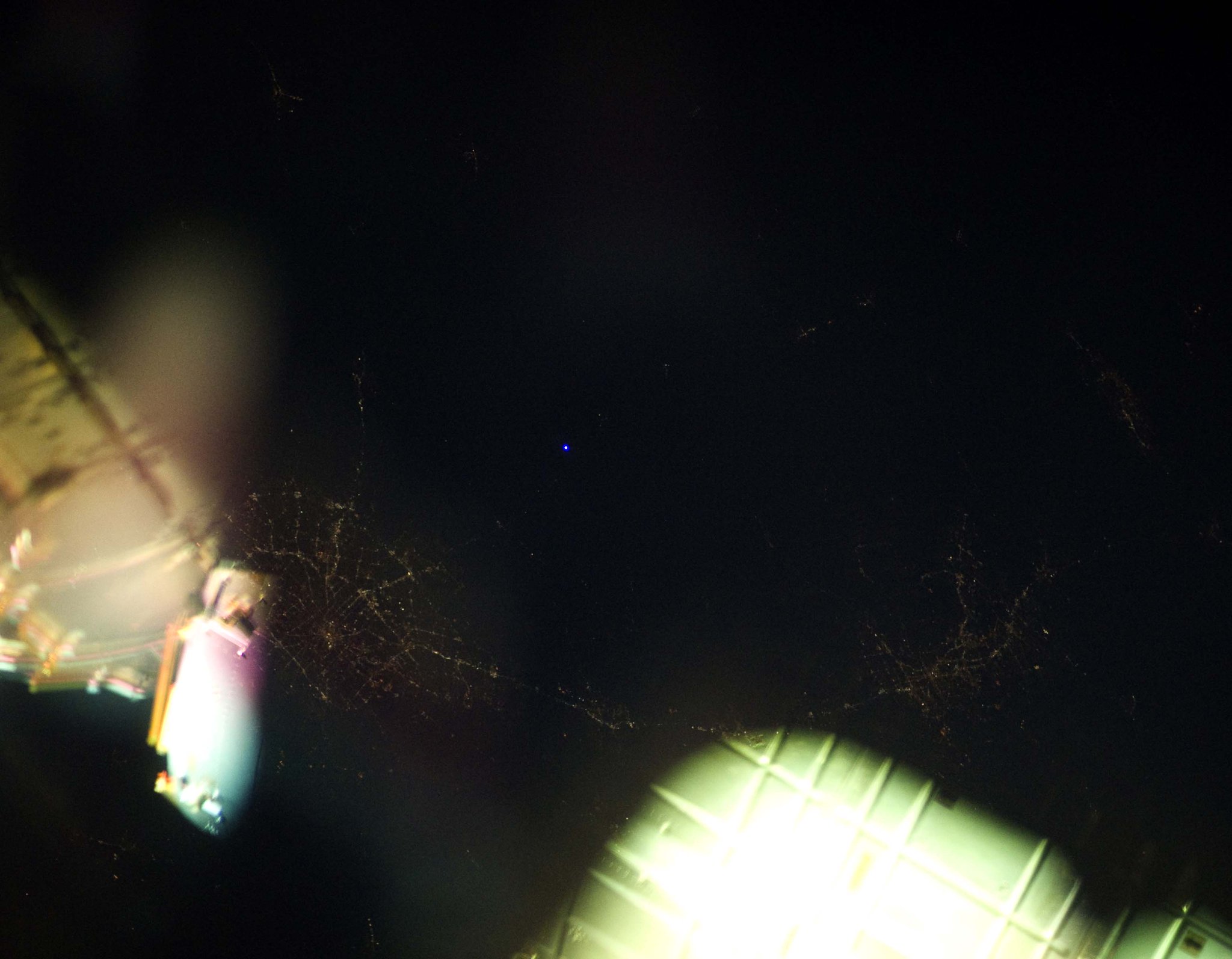Don Pettit mentioned a an experiment set up with the San Antonio Astronomical Society who pointed both spotlights and a blue laser pointer at the ISS, pictured below in a 5-10 second exposure:

I believe, but don't quote me on this, that the laser pointer was seen while the spotlight was not (with the aperture used). This is a picture from the ground, probably a short exposure (seeing the trail on the ISS). This was not an official experiment, rather one he set up with a friend who wanted to test a theory.
In addition to this, a picture of what the laser from the incident on March 4, 2012 can be seen in this tweet, also by Don Pettit, as Tristan previously mentioned, and would look approximately like this:

If you like cool, seemingly odd, but ultimately insightful experiments I highly suggest looking through his tweets and clicking into his blogs. He does many random experiments which have garnered him scientific patents and entries in research papers.
Quotes from an airspace article:
Early Sunday morning, at 01:27 our time, the San Antonio Astronomical Association, an amateur astronomy group, succeeded in flashing the space station with a one-watt blue laser and a white spotlight as we passed overhead. This took a number of engineering calculations. Projected beam diameters (assuming the propagation of a Gaussian wave for the laser) and intensity at the target had to be calculated. Tracking space station’s path as it streaked across the sky was another challenge. I used email to communicate with Robert Reeves, one of the association’s members. Considering that it takes a day, maybe more, for a simple exchange of messages (on space station we receive email drops two to three times a day), the whole event took weeks to plan.
Another photo of the light, from this source (I am unsure if they are the same image):

Note: This is all paraphrased from a talk he gave at NEAIC, so if it's wrong please correct me.
@DarrelHoffman pointed out that:
Should be noted that a 1 watt laser is far more powerful than the one you buy to tease your cat. At least in the US, the most powerful one a normal person can legally buy is only 5 milliwatts...
It was a 1 watt laser pointer.


